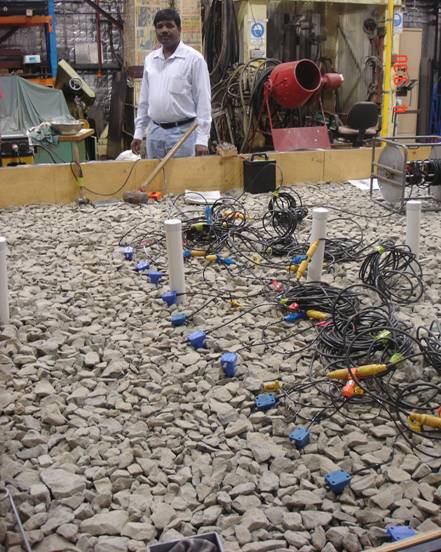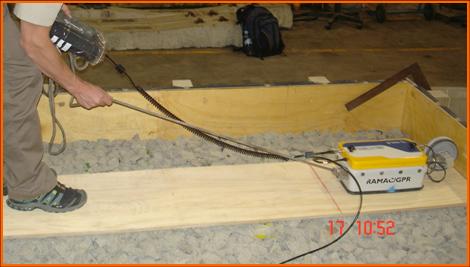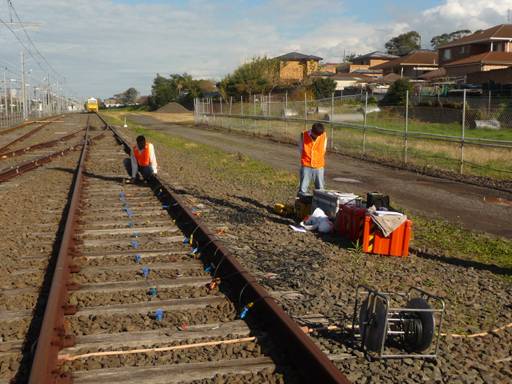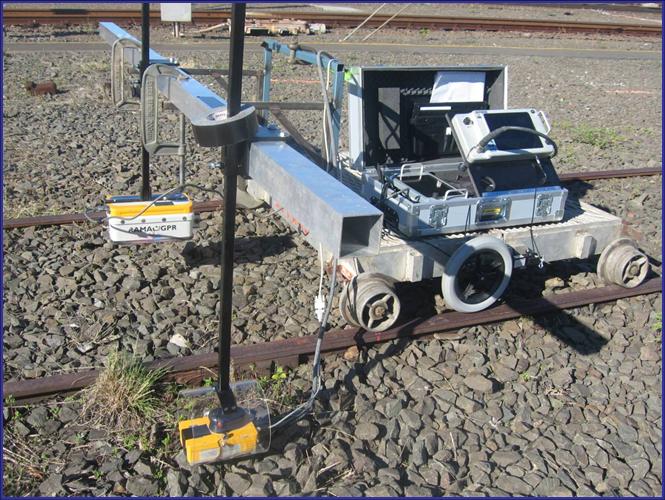Department of Civil Engineering, Indian Institute of Science Bangalore
Condition Assessment of Railways Track
Railways are massive transport system, which carry goods as well as passengers. The geotechnical components of rail tracks are a layered foundation consisting of ballast followed by the compacted sub ballast or capping layer placed above the formation soil. Ballast is a coarse granular medium (usually hard rock) placed above the sub ballast and below the rails. The load from the sleepers is distributed to the sub ballast and compacted earth through the main ballast section. A rail ballast bed acts as the main foundation for the above capping layers and performs many roles for the proper functioning of the railway networks. Rail ballast is a uniformly graded coarse aggregate produced from crushing locally available rocks such as granite, basalt, limestone, slag or gravel. The efficiency of track foundation material gradually decreases due to insufficient lateral confinement, ballast fouling, and loss of shear strength of the subsurface soil under cyclic loading. The characteristics of railway ballast beds are normally discovered by digging trenches at evenly spaced intervals, a process that requires a lot of resources. Various geophysical investigative methods are available for studying the ballast bed, including radar, infrared imaging, seismic refraction, and electrical resistivity among others.
Seismic surface wave and GPR instruments together are used to characterize railway ballast and subsurface. A model rail track was built with nine sub-sections, each having different fouling characteristics. MASW and GPR surveys were performed on top of each section of ballast and shear wave velocity was measured. The shear modulus of ballast fouled by pulverized rock, clayey sand and coal was calculated by using shear wave velocities and densities of each section are presented. The optimum and critical fouling points are defined considering the shear stiffness and drainage criteria for ballast fouled by clayey sand and coal. In both cases the shear stiffness is increased to a maximum value and then decreased as the percentage of fouling is increased. The degree of fouling corresponding to the maximum shear wave velocity is defined as the optimum fouling point (OFP). After a particular degree of fouling the shear stiffness decreased less than clean ballast and the corresponding drainage condition become unacceptable. This point is defined as the critical fouling point (CFP). Coal fouled ballast reaches the OFP and CFP before clayey sand fouled ballast. Fouling of ballast reduces voids in ballast and there by decreases the drainage. Combined plot of permeability and SWV with percentage of fouling shows that after critical fouling point, the drainage condition of fouled ballast goes below the acceptable limit. In-situ samples were collected and degrees of fouling were measured. The results obtained from the model track were compared with the field data. Field SWV values were more than that of the model track SWV values for the same degree of fouling, which might be due to sleepers confinement. Shear wave velocities were measured in selected location in Wollongong, Australia field track by carrying out similar seismic survey.



